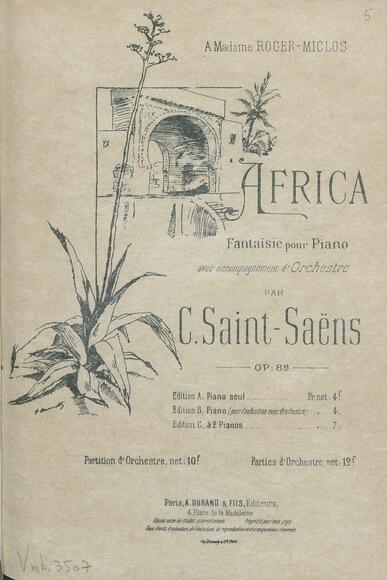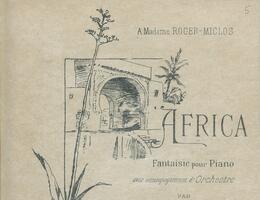Africa op. 89

Fantasy for piano with orchestral accompaniment, first performed at the Concerts Colonne on 25 October 1891.
After his mother’s death in 1889, Camille Saint-Saëns left on a long journey that took him to Ceylon and then to Cairo, abandoning Paris where his Ascanio was nevertheless premiered in March 1890. While touring on a cruise, he devoted himself to collecting musical memories. He himself wrote that Africa “is made up of African themes collected here and there over several years; there is even Tunisia’s national anthem, the remains of a stillborn concerto. For a long time these materials wandered in my memory without my being able to coordinate them, when one day, in Cairo [...] I was seized by a ‘fever’ and the composition simply came to me” (L’Écho de Paris, 16 November 1913). The themes heard in the fantasy are sometimes melodic, sometimes rhythmic, and their abundance tends to reveal the diversity of Africa’s musical traditions. In contrast with Orient et Occident(1868) or the Suite africaine (1880), the composer does not oppose the continents, but rather gives his perception of otherness as a Frenchman. “At times it borders on the Hungarian rhapsody; it is not my fault if the Bohemians of Hungary came from Africa. I have tried to show the unheard-of side of Africa, you will see if I have succeeded,” he wrote to his publisher six months before the premiere of the work by Aimée-Marie Roger-Miclos at the Concerts Colonne. Africa demands a frightening virtuosity and great precision from the performer. Saint-Saëns considered it a signature work and had it performed during the international tours he gave until the First World War.

